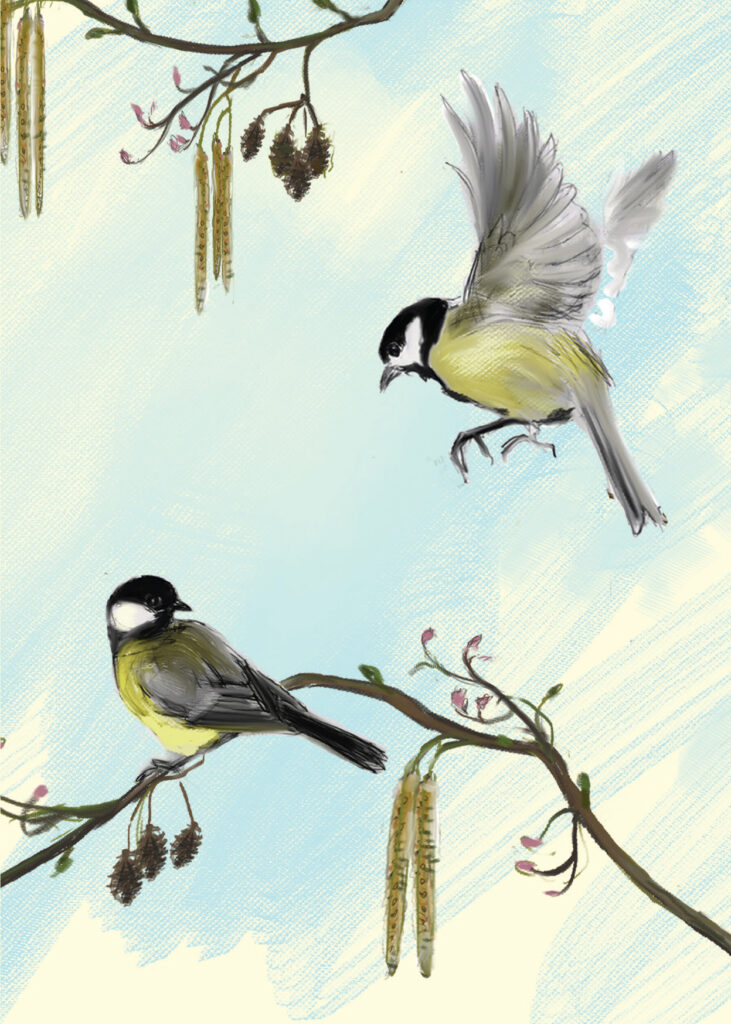I have been working on making some ceramic mugs and greeting cards for bird watchers for Two Bad Mice. In this post I describe how the development process works.
My decision was to make a range that we see in the garden and feed on the bird table. I started by making pencil studies of birds. This is a example of a page of pencil drawings of Great Tits. I research the images using videos and photographs, but once I have made a few drawings I get a feeling for the bird and I can invent additional poses.

The pencil drawings are then scanned and made into digital images
The drawings are then scanned and rearranged. Modern software packages like Photoshop and Corel Painter have very sophisticated digital painting brushes that mimic the ways real brushes work. The digital painting is done on a big flat screen with a digital pen that mimics the way we work with paint brushes. There are hundreds of different brushes to choose from. Each brush has its own characteristics. For instance the digital paint can be thick or watery and can be programmed to react as if it is being painted on to a textured paper. The colours can mix as if it is painting over wet paint. It this case I have used a translucent yellows and bluey, greening greys that give a water-colour finish. It only takes a few minute to paint the basic colours on all the images. I now have a small library of great tits in different poses

I want to make a design for a mug of the Great Tits in a alder tree. I have a wrap around layout for a mug.
The big advantage of painting digitally is that the paints are on different layers that can be switched on and off. In this case I have a layer for the birds, a layer for the branches and a layer for the background. I paint the branches using digital brushes and drop the images of the birds on top of the branches .
I also add more layers of paint to give the birds more body.

and on another layer add some background blue that goes behind the branches and birds

I then print out the design and wrap it around mug to get a visual of how the item will look after it has been manufactured.
A big advantage of digital painting is that we can change layers. For instance told me that for cards the images should be in a portrait format. I was able to drag the images around to fit a portrait format, move and resize the birds, change the background blue and add details.

Each of the bird cards include a summary on the back of the card. My final job was to research interesting information about the birds. This card was released in July 2019.

Here are some more images in the same series



and this is a gallery of the full set of cards!
After the cards were released we used the images again to make ceramics. This task was made much easier because the work was digital and in layers. I removed the backgrounds, and changed the format again to fit on bowls and mugs.

I hope to go on building on this rang so that we will have a range of gifts and cards for birdwatchers.















